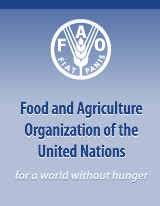|
Food safety and quality
|
|
|
| |
| Commodity: |
Corn / Maize |
| Traits: |
Herbicide tolerance,Insect resistance |
| Name of product applicant: |
Syngenta Crop Protection AG |
| Summary of application: |
|
| Upload: |
|
| Date of authorization: |
04/07/2017 |
| Scope of authorization: |
Food and feed |
| Links to the information on the same product in other databases maintained by relevant international organizations, as appropriate. (We recommend providing links to only those databases to which your country has officially contributed.): |
EU Register of authorised GMOs
|
| Summary of the safety assessment (food safety): |
Please see the EU relevant links below. |
| Upload: |
|
| Where detection method protocols and appropriate reference material (non-viable, or in certain circumstances, viable) suitable for low-level situation may be obtained: |
Method for detection: event specific real-time quantitative PCR based methods for SYN-BTØ11-1, DAS-59122-7, SYN-IR6Ø4-5, DAS-Ø15Ø7-1 and MON-ØØØ21-9 maizes; the detection methods are validated on the single-trait events and verified on genomic DNA extracted from seeds of SYN-BTØ11-1 × DAS-59122-7 × SYN-IR6Ø4-5 × DAS-Ø15Ø7-1 × MON-ØØØ21-9 maize. Reference Material: ERM®-BF412 (for SYN-BTØ11-1), ERM®-BF424 (for DAS-59122-7), ERM®-BF423 (for SYN-IR6Ø4-5) and ERM®-BF418 (for DAS-Ø15Ø7) accessible via the Joint Research Centre (JRC) of the European Commission and AOCS 0407-A and AOCS 0407-B (for MON-ØØØ21-9) accessible via the American Oil Chemists Society (https://www.aocs.org/crm). The relevant links are provided below. |
| Relevant links to documents and information prepared by the competent authority responsible for the safety assessment: |
Method for detection
Reference Material
Opinion of the European Food Safety Authority
|
| Upload: |
|
| Authorization expiration date (a blank field means there is no expiration date) |
03/07/2027 |
E-mail:
Organization/agency name (Full name): European Union
Contact person name: Alexandre Huchelmann
Website:
Physical full address: European Commission B232 04/106 1047 Brussels
Phone number: 3222954092
Fax number:
Country introduction: The process for authorising a new GMO is based on the EU regulation on GM food and feed (1829/2003). An application for authorising food or feed consisting of or made from a GMO must be submitted to the national authorities. The national authority then sends the application to the European Food Safety Agency (EFSA) for a risk assessment. EFSA then makes the application summary available to the public. No matter where in the EU the company applies, EFSA assesses the risks the GMO presents for the environment, human health and animal safety. If the application covers cultivation, EFSA delegates the environmental risk assessment to an EU country which sends EFSA its risk assessment report. After performing the risk assessment, EFSA submits its scientific opinion to the European Commission and to EU countries. The opinion is made available to the public, except for certain confidential aspects. Once EFSA publishes its risk assessment, the public has 30 days to comment on the Commission website for applications under Reg. 1829/2003, and on the Joint Research Centre website on the assessment report of the "lead" EU country for applications under Directive 2001/18. Within 3 months of receiving EFSA's opinion, the Commission grants or refuses the authorisation in a proposal. If it differs from EFSA’s opinion, it must explain why. National representatives approve the Commission’s proposal by qualified majority in: (1) The Standing Committee on the Food Chain and Animal Health if the application was submitted under Reg. 1829/2003; (2) The Regulatory Committee under Directive 2001/18/EC if the application was submitted under Dir. 2001/18. The proposal is adopted if the Committee agrees with it. If there is no opinion, the Commission may summon an Appeal Committee where EU countries can adopt or reject the proposal. If the Appeal Committee makes no decision, the Commission may adopt its proposal. Authorisations are valid for 10 years (renewable). Useful links
Relevant documents
Stacked events:
Contact details of the competent authority(s) responsible for the safety assessment and the product applicant:
|
|
|
